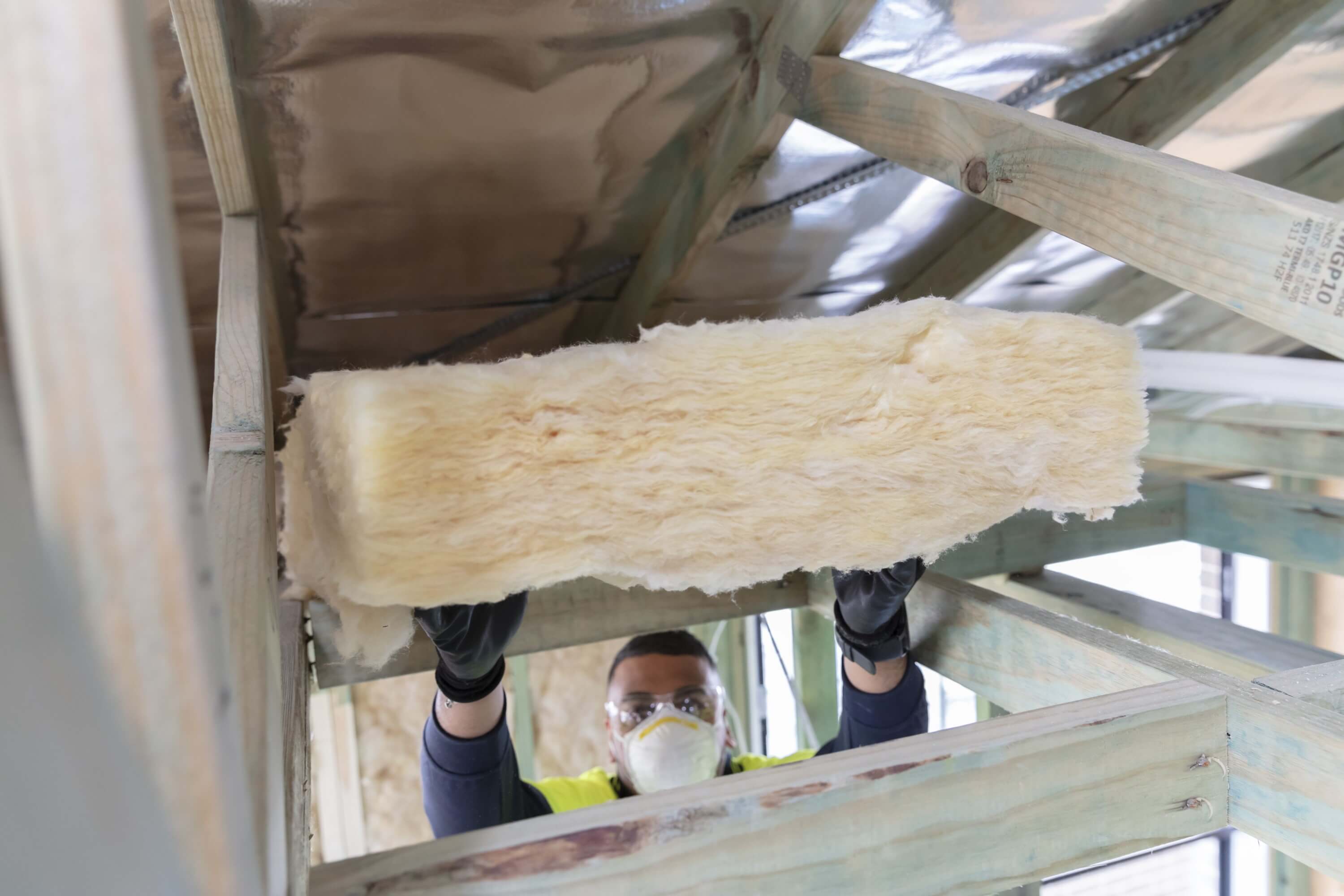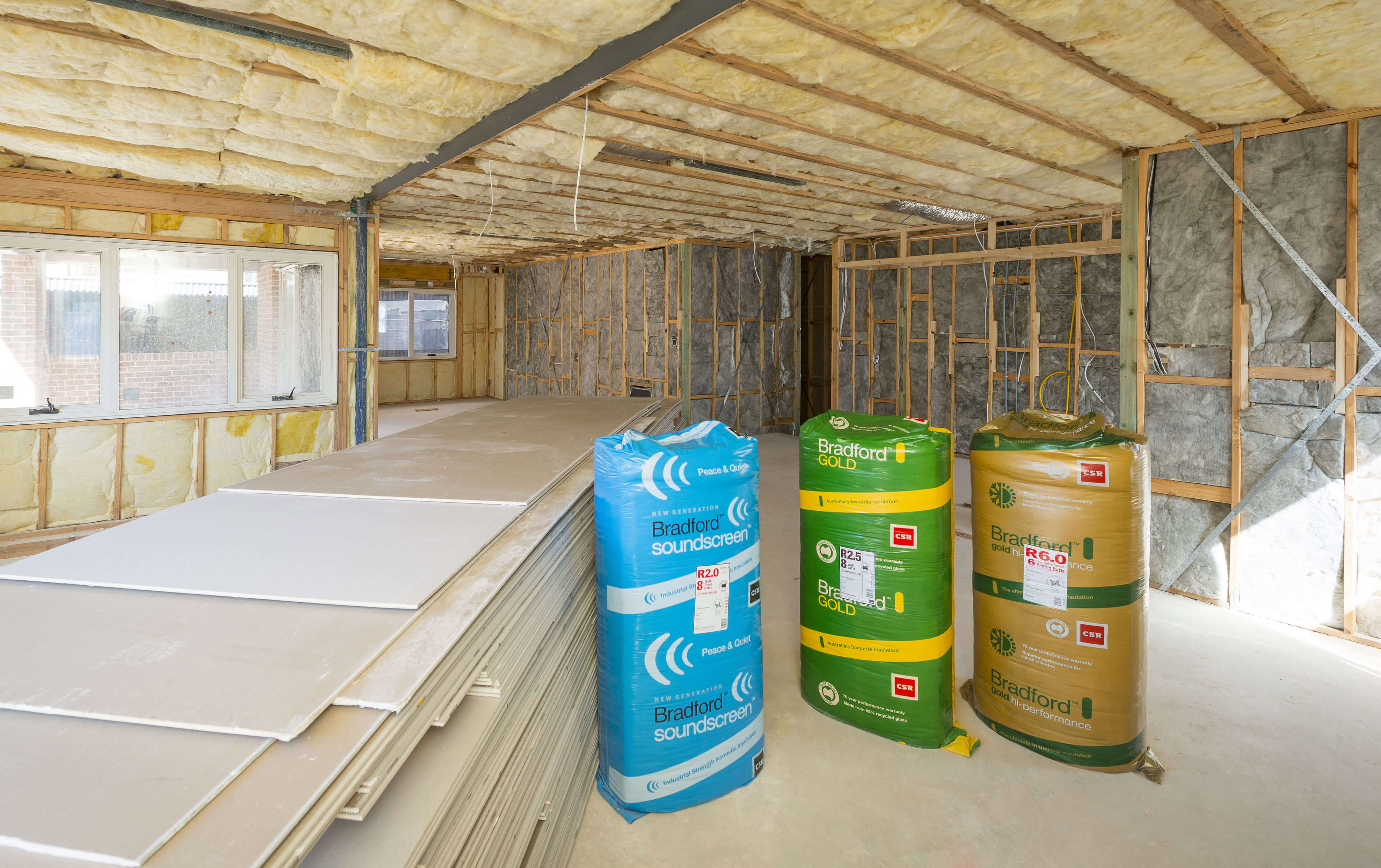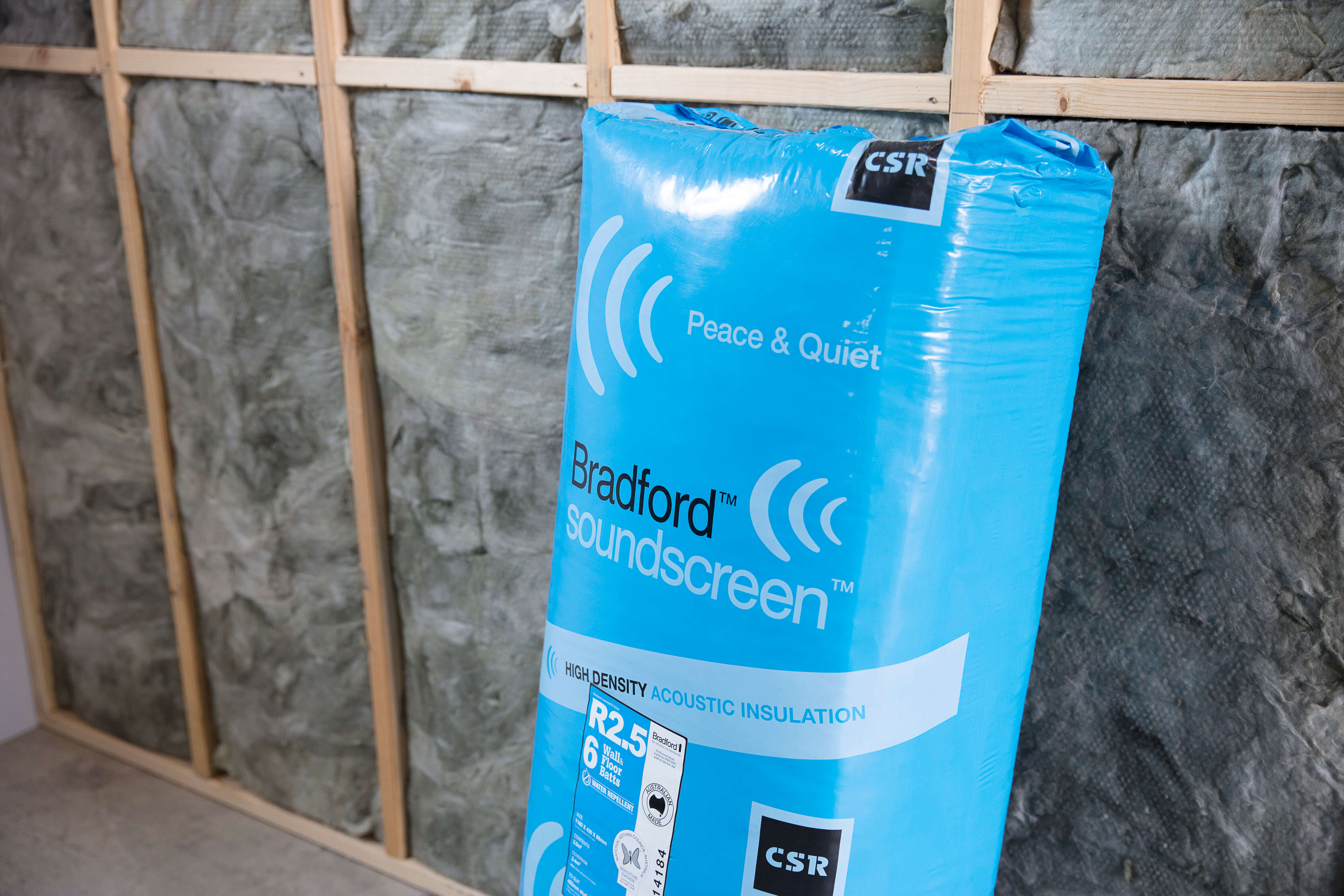What is insulation and why it's important
Insulation is the key to a healthy, comfortable, energy-efficient home. Despite this, many homes are under-insulated, and many homeowners aren't aware of the significant impact it can have on their lives. We've outlined everything there is to know about insulation to help you learn what it is and how it can benefit your home.
What is insulation?
Insulation is a building material that slows sound and heat transfer from one area to another. In summer, insulation prevents heat from entering your home, while in winter, it minimises heat escaping, reducing your energy bills and maintaining a comfortable, harmonious home.

Why is insulation important?
the benefits of insulation are numerous, making it a vital addition to every home:Decrease electricity bills and provide thermal comfort
Insulation helps decrease electricity bills by allowing less heat to escape, making appliances such as heaters and air conditioners more efficient. With less heat escaping, reliance on heating and cooling systems is reduced, calling for less energy consumption and allowing you to save money on energy bills (Insulation can save up to 45% (or more) on heating and cooling costs.). Insulation also helps create a comfortable living environment by maintaining a consistent temperature throughout the year.
Provide acoustic comfort
Moreover, Bradford glasswool insulation products improve acoustics by absorbing airborne noise, reducing unwanted noise transfers between rooms, and dampen the sound of rain when installed directly under a roof.
Improve fire protetion
All modern homes should be as fire resistant as possible. Upgrading your home with Bradford glasswool insulation means you can enjoy peace of mind knowing that your roof, wall and ceiling insulation is made from non-combustible fibres.
Create a healthy home
A healthy home environment is one that allows you and your loved ones to thrive. Adequate insulation and anti-condensation systems reduce susceptibility to trapped moisture, minimising your risk of mould and mildew growth and fostering better indoor air quality.
How does insulation work in a house?
Insulation is a material that works as a barrier to slow the movement of heat, keeping your home warmer in winter and cooler in summer.
Heat is thermal energy and naturally shifts from higher to lower temperature areas until the temperature is the same everywhere. Without adequate insulation, if it's hot outside and cooler inside, that thermal energy will flow into your home. This also occurs when your home is warm and it's cold outside; the heat inside will escape.
Heat flow involves three basic pathways:
- Conduction: heat that moves through materials. This is seen when a spoon placed in a hot cup of coffee transfers heat from the coffee to the handle of the spoon to your hand.
- Convection: Heat that circulates through liquids and gases. This is why warm (lighter) air rises and cooler (denser) air sinks.
- Radiation: Radiant heat travels in a straight line and heats all solid objects in its path if they absorb its energy.
Most insulation materials slow conductive and convective heat transfer, while radiant barriers and reflective insulation reduce radiant heat gain. To learn more about how insulation works, check out our explanation of the science behind thermal insulation batts.

What factors influence your insulation needs?
Climate
The placement and type of insulation best suited to your home depends on your local climate. Some insulation is best suited to hot climates, where the main purpose is to keep out heat. Colder climates may need insulation that works best to prevent heat from escaping, while other environments require an optimal balance of both. You'll also need to consider your climate's humidity level, amount of rainfall and temperature variations to determine if your home would benefit from any further upgrades to future-proof your home against moisture and condensation.
Types of insulation
types of insulation are available in the Australian market, each with unique benefits, R-values, and ideal placements. When considering the types of insulation best suited to your needs, you'll need to know where you want to install the insulation and find out what benefits each type offers, such as ease of installation and its impact on air quality.
There are 3 main types of insulation:
- Bulk insulation - insulation material that uses pockets of trapped air within its structure to resist the transfer of heat. Its thermal resistance is essentially the same regardless of the direction of heat flow through it. Glasswool insulation batts is one of the most common types of bulk insulation.
- Reflective insulation - insulation material that is usually made up of shiny aluminium foil laminated onto paper or plastic and is available as wall wrap or sarking. This insulation is also known as reflective foil laminates (RFL), and are effective at resisting radiant heat in the same direction that the heat travels.
- Composite material - insulation material that combines bulk and reflective insulation, such as reflective foil-faced roofing blankets. The reflective insulation reduces radiant heat entering a home during summer, and helps prevent condensation in winter, whilst the bulk insulation helps reduce unwanted noise and provides a thermal R-Value benefit.
The part of the house you plan to insulate
Different parts of the home require different types of insulation. At Bradford, we offer a range of insulation for roofs, ceilings, walls and floors, which help reduce heat transfer for a comfortable, healthier home.
R-value
How well an insulation product resists heat flow is known as its R-value; the higher the R-value, the higher the level of insulation. When choosing insulation for your home, it's not the thickness of the product or type of material that counts; it's the R-value. Bradford insulation offers the highest-rated insulation batts available in Australia to provide your home with the best possible insulation. Learn more about R-Value here.
.jpg?la=en&hash=63E42120AF90E185D2B3DFDEADA2209A3288C322)
What is the most important area of the home to insulate?
Walls
A type of insulation essential for a comfortable home is wall insulation. This type of insulation provides a barrier between your living space and the weather outside. When insulated correctly, heat transfer is minimised, providing a more comfortable, energy-efficient environment.
Ceilings
Uninsulated homes can lose up to 25% to 35%* of the heat through the ceilings in winter and around the same amount of heat can also enter in during summer. Ceiling insulation can significantly boost your home's energy efficiency and comfort. Thermal insulation in the ceiling prevents heat transfer in and out of your home and is specifically designed in a range of thicknesses suitable for different climate zones in Australia.
Roofs
At Bradford, our innovative roofing insulation products enhance energy efficiency, improve noise control, meet condensation requirements, and protects against fire.
Floors
Floor insulation contributes approximately 10% to 20%* of heat transfer during winter and summer. This type of insulation provides a much-needed barrier between your living space and the elements outside, preventing heat from escaping and draughts from entering.
A fully insulated home is the most cost-effective way to improve energy efficiency and comfort. When insulating your home for the best results, we recommend installing insulation in:
- External walls and ceilings
- Under roof insulation
- Under the floor in homes built from the ground
For additional acoustic benefits, install insulation in:
- Internal walls
- Between storeys in a double storey home
What upgrades can be made to ensure my home is insulated?
When planning your new home, it's important to choose the right materials to make your home as comfortable as possible. Comfort, which comes in many forms, involves lots of things that come together to provide you with:
- Financial comfort: Thermal insulation provides financial comfort and security by reducing your energy bills for the life of your home.
- Acoustic comfort: In-wall acoustic insulation allows you to live together comfortably and peacefully by minimising noise disturbance.
- A healthy home: Insulation and anti-condensation upgrades reduce your risk of mould and mildew growth, fostering a healthier home with better indoor air quality.
- Thermal comfort: Achieve a comfortable home with thermal insulation that reduces temperature fluctuation throughout the year.
- Peace of mind: Bradford's Total Home Comfort Upgrades provide peace of mind, allowing you and your family to thrive in a comfortable home
View our recommended upgrades during your home's planning stage to learn more about building a comfortable home.
Reference: * Max Mosher, Caitlin McGee, Dick Clarke © Commonwealth of Australia Department of Climate Change, Energy, the Environment and Water [2022]. Your Home: Australia's guide to environmentally sustainable homes, updated 2020, URL: www.yourhome.gov.au/passive-design/insulation




